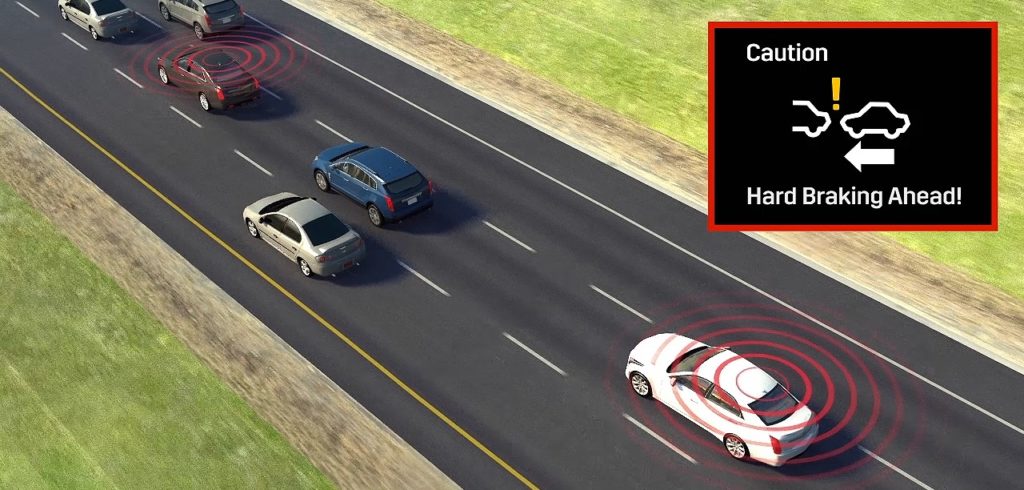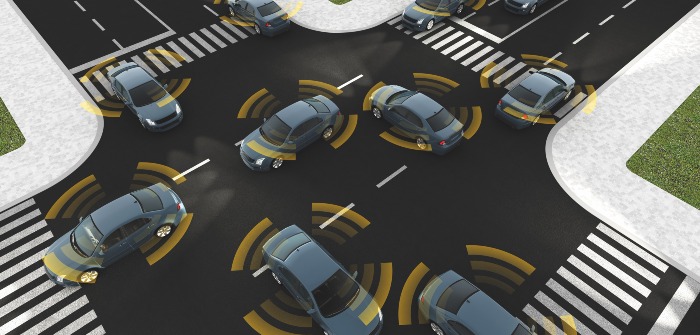For years, a set of niche engineers within US car companies have been testing DSRC for V2X applications, assuming it would emerge as the standard technology. They have been attending standards meetings and researching a myriad of technical issues, especially around security and latency. Most of these engineers never imagined that 4G – and now the longer-term option of 5G – would emerge as a competitor to DSRC.
“They were flatfooted by cellular V2X (C-V2X) because the car makers have never found a convincing business model for DSRC,” says Andrew Hart, director of industry research group SBD Automotive. “Who pays for the hardware in the car and who pays for roadside infrastructure?”
DSRC sidelined
The engineers, and their bosses, were banking on a governmental trigger in the shape of legislation mandating new cars have DSRC. But that hasn’t happened. General Motors introduced V2V functionality in its Cadillac CTS in 2017, in anticipation of a mandate for DSRC, but this was sidelined in November 2017 by the Trump administration. “That decision has killed off DSRC in the USA and the OEMs are no longer taking it seriously,” argues Hart. “The mandate was needed to create a strong business case for DSRC so early adopters are not left paying for a technology that isn’t used for years. We’re now left with a chicken and egg situation. You can’t just have one car on the market that can communicate. It needs something to communicate with.”

Hart believes the USA and Europe are now likely to turn more toward C-V2V. The hardware is cheaper, he says, and car companies can piggyback new functionalities on the back of existing cellular applications, such as entertainment services. C-V2V requires connected boxes, but not standalone roadside units that serve no other purpose. “With cellular, car makers can guarantee millions of cars with cellular connections,” he says. “There’s also a well-trodden path for standardizing all the iterations of 4G we will see over the next three or four years on the way to 5G.”
The experience of regulating DSRC applications in Europe has not been a happy one, Hart argues: “Legislation has been taking too long. It’s taken two decades to kickstart eCall, which sends out ID data after a crash. DSRC requires so much roadside infrastructure that implementing it across different countries is complex from a business and technical standpoint.”
Despite his enthusiasm for the cellular approach, Hart acknowledges technical problems: “How can you guarantee spectrum will be reserved for automotive applications and that you won’t get interference from other devices? There are also tons of questions about how cellular technology will manage latency and security.”
4G safety questions
Safety remains the most critical issue for current 4G applications. With 5G an emerging technology, most tests to date have been on 4G networks. They have tended to show that most applications can be done using either technology, but that DSRC is more effective for safety. “For non-safety applications, such as traffic information or weather alerts, 4G is fine as you don’t need to respond in sub-seconds,” says Prof. Michael Zhang, an engineer who researches autonomous vehicles at the University of California. “With safety-critical applications you need much faster latency. DSRC is typically less than 0.1 seconds, much faster than 4G. It’s possible 5G will be better, but that’s unproven. The main problem with DSRC is the high unit cost – around US$2,000 each. That needs to drop to US$200 or lower to make it viable.”
Zhang was involved in a Chinese research project in 2017, comparing DSRC and 4G-LTE (long-term evolution), which is the fastest variety of 4G available and lays down foundations for 5G. The team tested the technologies on a 2.4km (1.49 mile) high-speed circular test road at Chang’an University. They installed four DSRC roadside units and a 4G-LTE system, then tested both for three applications: collision avoidance, traffic message broadcast and V2I multimedia file download.
LTE performed worse than DSRC for collision avoidance, which the researchers put down to the Doppler effect and the cellular hand-off of the LTE network. “It means LTE cannot meet the lowest requirement of 100ms for safety applications,” they concluded. “DSRC is more suitable for safety-related V2V traffic applications.”
However, cellular turned out to be better for multimedia file download. The throughput was a lot higher at different vehicle running velocities and it had a much longer coverage range. Both technologies were acceptable for traffic text message broadcasts. The researchers concluded that a combination of DSRC and LTE would be a good solution.
5G solution
The issues around safety could be solved by 5G technologies, according to Harman, a subsidiary of Samsung. The company is developing a 5G solution for a European car maker, which it claims will have latency speeds of 1ms, making it suitable for safety applications. These claims have not yet been substantiated.
At the University of Michigan, Prof. Gabor Orosz heads a research group investigating a new technology that uses GPS sensors and V2V to detect vehicles beyond line of sight. Although Orosz is testing this with DSRC, he remains unsure which technology will win out. One likely scenario, he believes, is that both DSRC and cellular will coexist with 5G for a few years, before one or both is incorporated into 5G. “What we call 5G is a collection of technologies, some still in development,” he says. “For example, 5G contains millimeter-wave-based technologies (30-300GHz) that show the potential of very high bandwidth to allow sharing of camera images between vehicles, but it is missing important capabilities offered by DSRC and C-V2X. With DSRC and C-V2X, no line of sight is required for V2V, which can help vehicles to avoid safety-critical scenarios and mitigate traffic jams. That’s why I expect 5G to contain DSRC or C-V2V, as well as millimeter-wave technologies.”
Speaking at Silicon Valley’s Innovation and Impact Symposium 2017, Brian Daugherty, CTO of the Motor & Equipment Manufacturers Association, also suggested the two technologies could be knitted together: “Low-latency things – collision avoidance – will be handled by V2V and the active sensors. Slightly longer-range things, like traffic congestion, will be handled by cellular LTE and 5G systems of the future.”
With so much doubt about which technology will be taken up, Qualcomm has been working with both. However, in 2017 a Qualcomm spokesperson said there was now “momentum behind C-V2X”. He pointed out that the 5G Automotive Association now has more than 60 members including Audi, BWM and Daimler, plus Tier 1 suppliers and mobile operators. Qualcomm also announced the first US trials of C-V2X, in San Diego, in collaboration with AT&T, Ford and Nokia.
Communications breakdown?
Hart sees US developments as evidence of a shift to cellular, but offers another perspective on the debate. “There are many who argue that V2V might not be necessary,” he says. “Solutions need to be compared with standalone autonomous cars that use sensors to map what’s around them without needing connectivity. Whatever V2X technology is used, it could take years to implement. In the UK, the average car is scrapped after 11 years, so it would take at least a decade to become standard and it could take 25-30 years without legislation.”
Orosz, however, is convinced that autonomous vehicles will be safer if they are connected: “We recently saw a tragic accident when a pedestrian in Arizona was killed by an Uber autonomous car. I believe that had the car been connected to the roadside infrastructure, it could have averted the tragedy. My research supports the conclusion that the push for connectivity will come from automated vehicle manufacturers, to make their products safer and more affordable.


